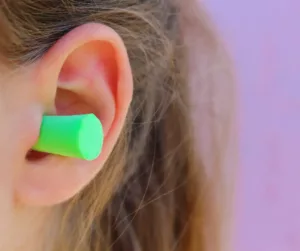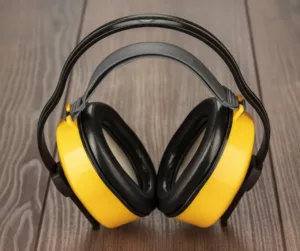The Dos and Don’ts of Hearing Safety
The Importance of Hearing Safety
Hearing safety is vital for maintaining your hearing abilities and avoiding hearing loss. This loss significantly impacts communication, social interactions, and overall life quality.
The Prevalence and Impact of Hearing Loss
About 10% of Americans experience hearing loss that hampers speech understanding. Noise exposure is the leading cause. Workers often develop adaptive strategies to cope with gradual hearing loss. The effects of noise, including tinnitus (persistent ringing in the ears), can be severe. However, preventing further damage is possible at any stage of hearing loss.
Explore more about different types of hearing loss.
Understanding How the Ear Functions
- Ear Anatomy: The ear comprises the outer, middle, and inner parts. The outer ear leads to the ear canal, ending at the eardrum. The middle ear contains small bones that transmit sound to the inner ear, where the auditory nerve sends sound signals to the brain.
- How Sound is Processed: Sound waves enter the ear, vibrate the eardrum, and go through the middle ear bones to the inner ear. Here, they become nerve impulses sent to the brain, which interprets them as sounds.
- The Impact of Loud Noise: Excessive noise damages the inner ear’s nerve endings, leading to hearing loss. This damage is cumulative and irreversible, emphasizing the importance of hearing protection.
Why Does Hearing Safety Matter?
Here’s an in-depth look at why hearing safety matters:
- Preventing Hearing Damage: Loud sounds can harm the inner ear’s delicate hair cells, causing irreversible hearing loss. This is a global public health issue affecting millions. Noise-induced hearing loss (NIHL) is preventable mainly by safeguarding your ears.
- Maintaining Communication and Social Life: Hearing loss can hinder speech understanding, especially amid noise. This often leads to social withdrawal, diminished confidence, and relationship struggles. Protecting your ears ensures effective communication and active participation in social events.
- Avoiding Emotional and Mental Health Problems: Hearing loss connects to loneliness, anxiety, depression, cognitive decline, and higher dementia risk. Preserving your hearing is crucial for emotional and mental health.
- Enhancing Life Quality: Good hearing enriches life experiences, from enjoying music and nature sounds to engaging in conversations and learning. Protecting your ears allows you to appreciate life’s auditory aspects fully. Remember, 10% of Americans have hearing loss that impairs everyday speech understanding. Noise is the leading cause.
- Adapting to Long-term Hearing Loss: Many with long-term hearing loss adapt to its gradual onset. Noise’s impact is real and potentially devastating. Tinnitus, a constant ear ringing, can be unbearable for some. Regardless of your current hearing state, preventing further damage is crucial. Even those with severe loss should strive to preserve their remaining hearing.
In summary, hearing safety is not just about preventing hearing loss; it’s about preserving your quality of life and emotional well-being and connecting with the world around you.
Understand more about the importance of hearing health.

Do’s and Don’ts of Ear Protection: Hearing Safety Tips
Understanding Decibels and Noise Impact
Recognizing which sounds are safe and pose a risk to our auditory health is essential.
- Decibel Levels Explained: Sound levels are measured in decibels (dBA). Safe sounds are typically at or below 70 dBA. Noise above 85 dBA can cause hearing loss. Examples include regular conversations (60-70 dBA), lawnmowers (80-100 dBA), motorcycles (80-110 dBA), concerts (94-110 dBA), sirens (110-129 dBA), and fireworks (140-160 dBA).
- Noise and Hearing Loss: Prolonged or intense noise exposure damages hearing. This damage is irreversible. Continual exposure above 85 decibels is hazardous. Impact sounds, like gunshots, are especially harmful. Even brief exposure can be damaging.
- Additional Effects of Noise: Beyond hearing loss, noise exposure can lead to tinnitus, anxiety, increased pulse rate, and reduced task efficiency.
Embracing effective hearing safety practices is essential for maintaining long-term ear health. These practices help you keep your hearing sharp and protected in various environments.
The Do’s of Hearing Safety Tips
- Monitor Noise Levels: Use apps like NIOSH’s Sound Level Meter to assess environmental noise risks.
- Wear Proper Ear Protection: Use earplugs or earmuffs in noisy environments, like shooting ranges or industrial settings.
- Lower Volume Settings: Keep the volume of devices at a safe level to prevent long-term hearing damage.
- Regular Hearing Check-ups: Schedule annual hearing tests, especially if you’re frequently exposed to loud noises.
- Educate Yourself and Others: Stay informed about hearing risks and share knowledge with friends and family.
- Follow Workplace Safety Protocols: Adhere to safety guidelines in noisy work environments.
- Practice Healthy Ear Care: Keep ears clean and dry. Avoid inserting foreign objects into the ear canal.
- Take Breaks from Noise: Allow your ears time to recover after exposure to loud environments.
- Use Noise-Canceling Headphones: Opt for noise-canceling headphones to enjoy audio at lower volumes.
- Stay Aware of Environmental Noise: Be conscious of noise levels in your daily surroundings and take steps to minimize exposure.
Discover more about foods for hearing health.
The Don’ts of Hearing Safety Tips
- Avoid Excessive Noise: Steer clear of prolonged loud noises, such as concerts or fireworks, to prevent inner ear damage.
- Don’t Use Cotton Swabs: Avoid cleaning ears with swabs or picks. They can harm the ear canal and eardrum.
- Limit High-Volume Music: Keep music and podcast volumes moderate. High volumes over time can gradually damage hearing.
- Heed Warning Signs: Pay attention to hearing loss indicators. Consult an audiologist if you notice any symptoms.
- Use Hearing Protection: Always wear earplugs or earmuffs in noisy environments to protect your hearing.
- Seek Professional Help Promptly: Don’t delay treatment for hearing concerns. Early intervention is critical.
- Avoid Self-Treatment: Consult professionals for hearing issues rather than using unverified methods.
- Limit Headphone Use: Use headphones moderately and take breaks to rest your ears.
- Address Workplace Noise Risks: Engage with employers about hearing protection if your job involves loud noises.
- Prioritize Hearing Safety: Make hearing protection a daily habit to ensure long-term ear health.
By adhering to these do’s and don’ts, you can effectively protect your hearing and enjoy a lifetime of healthy auditory experiences.

Choosing the Right Safety Hearing Protection
Selecting the right hearing protection is vital to prevent noise-induced hearing loss (NIHL) and protect your ears from harmful noise levels. Here’s a guide to help you make the best choice:
Key Factors for Selecting Ear Protection
Understanding the specific factors for choosing hearing protection is vital to safeguarding your ears effectively.
- Noise Level: Know the decibel level of your environment. Concerts (90-110 dB), power tools (100-115 dB), and fireworks (up to 145 dB) are examples of high-decibel settings.
- Duration of Exposure: Longer exposure times, even to moderate noise levels, can cause hearing damage.
- Type of Noise: Different noises, like continuous or impulsive (e.g., gunshots), require specific protection types.
- Comfort and Fit: Choose a comfortable, well-fitting option to ensure effective protection.
- Noise Reduction Rating (NRR): Select a hearing protector with a suitable NRR for sufficient noise reduction.
Types of Safety Hearing Protection
Different situations call for various types of hearing protection, each with its unique features and benefits.
- Earplugs: Available in formable foam, pre-molded, and custom-made varieties. They are inserted into the ear canal, available in foam, silicone, or wax, with varying NRRs.
- Earmuffs: Cover the entire outer ear and offer higher NRR but may be less comfortable in heat.
- Dual Protection: In extremely loud environments, use earplugs and earmuffs together for maximum protection.
- Canal Caps: Feature a stiff band, useful for intermittent noise exposure.
Hearing Safety Tips on Usage and Maintenance
Maintaining your hearing protection devices is crucial for their longevity and effectiveness.
- Regular Inspection: Check for wear and tear; replace damaged protectors.
- Proper Storage: Keep in a clean, dry place.
- Education: Share knowledge about hearing safety.
When to Wear Hearing Protectors
Wear them in noisy settings like auto races, concerts, shooting sports, and loud workplaces. Keep them handy for unexpected loud noises, and cover your ears if caught off guard. Select comfortable, easy-to-use protectors and allow communication in noisy environments. Consult a hearing health professional for advice or custom-made options. Remember, proper fit and consistent use are fundamental to effective hearing protection.
By understanding the factors for selection, the types available, and their proper use and maintenance, you can effectively prevent noise-induced hearing loss and ensure a lifetime of healthy hearing.

Embrace Hearing Safety Protection with American Hearing + Audiology
Hearing safety tips are more than a precaution; they are a commitment to preserving your quality of life and maintaining your connection to the world. The first step is to understand the importance of safety hearing protection for your ears. From knowing when to wear ear protectors to choosing the right type, each action you take contributes to your auditory health. As you navigate the challenges of noise exposure in everyday life, remember that the proper guidance and tools are essential in this journey. If you’re seeking expert advice on hearing protection or need custom solutions tailored to your lifestyle, American Hearing + Audiology is here to help. Contact us for personalized assistance in choosing the ideal hearing protection and embracing a future of clear, vibrant sound. Your hearing is invaluable; let’s protect it together



